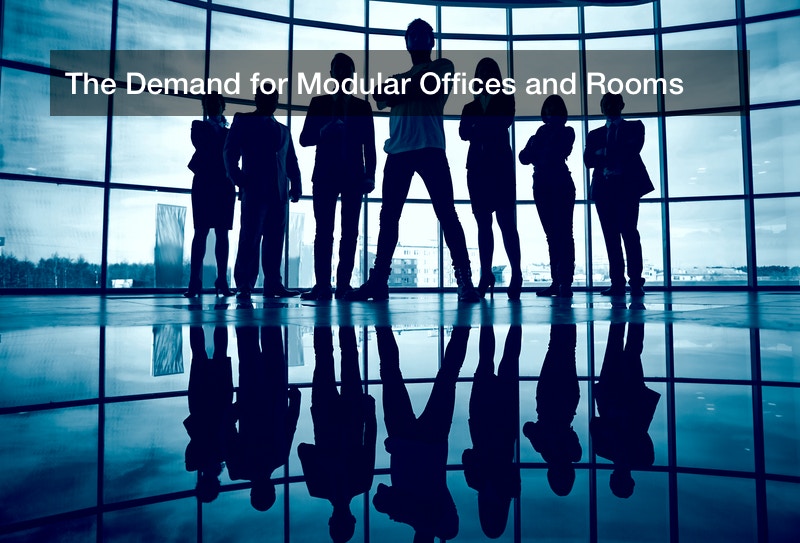The modern construction industry is a truly vast one; in fact, it is worth over $1 trillion, and it spans many different construction companies large and small. Buildings such as schools, banks, hospitals, hotels, banks, and more are built every day, and construction firms are always looking for more resource-efficient and cost-friendly ways to make these structures. This can take many forms, such as spiral ducts to save on sheet metal for the HVAC utility, not to mention low-flow toilets and sinks. Meanwhile, what about modular offices, and warehouse offices? Modular, prefabricated offices are becoming more and more popular, and they have plenty of appeal for the builders and buyers alike. In-plant modular offices are relatively easy and efficient to make, and this can cut down on resource waste. So, what is there to know about modular offices technology? And how can it be used for warehouses?
Modular Offices and the Basics
This concept is relatively new, but it is gaining ground fast. By now, around 90% of engineers, 84% of all contractors, and 76% of all architects are using prefab or modular construction methods for some of their projects. The idea is to build modular offices and similar rooms inside a factory or workshop, and fully fabricate it with lighting, carpeting, plumbing, and anything else that is needed for the final product. Only when it’s done will it be shipped to the construction zone, and it can be fitted right into place with ease. These modular offices are ready for use the moment they are fitted into place, and more than one room can be installed like this. In fact, some Chinese construction firms are building entire hotels like this, making the construction process faster and easier overall.
What sort of buildings typically have modular offices and rooms put in? In 2011, this construction method was useful for commercial jobs such as healthcare facilities, dormitories and college structures, and manufacturing facilities. Offices can also make good use of them, such as skyscrapers or corporate headquarters. Hotels are often doing this too, and Marriott (as one example) once pledged to use modular construction for 13% of its North American developments in 2017. Meanwhile, FMI’s 2013 Prefabrication and Particularization in Construction Survey revealed that 40% of all contractors considered prefab and modular construction techniques as part of their company’s strategic initiative.
The Perks of Modular Offices
As mentioned earlier, building modular rooms and structures is very resource-efficient, and a lot of waste is eliminated this way. The UK-based WRAP (Waste and Resources Action Programme) says that modular construction reduces up to 90% of all waste for bricks, timber, wood pallets, shrink wrap, cardboard, and plasterboard. Many regular construction zones involve hiring junk removal services to haul away such scrap materials, which is an extra expense. But that is largely eliminated with modular construction. What is more, this construction method can reduce a project’s energy consumption by 67% or so, and even reduce energy costs for the occupants later.
Overall, building offices and rooms this way can reduce the cost and time needed to build a structure, and there may even be unique tax benefits, too. Excess materials are more easily recycled, and these modular rooms tend to come with warranties, as well. A wholesale customer can also, of course, request a quote for a particular project, and factories can make a wide variety of modular rooms with different layouts and materials involved. Modular wall systems can be made like this, too, providing even more options for construction. When these rooms are installed in a building, they tend to be very low-maintenance, and very few finishing touches need to be added once they are in place. In short, once they are put in place, modular rooms are completely ready for occupancy and use.
Some of these modular offices are designed to be portable, and they can be placed on a large truck bed and taken wherever they are needed. Construction managers, for example, may need these so they can set up their office near a current construction project, and that office comes with fabricated walls, carpeting, lighting, furniture, and more. Meanwhile, a warehouse’s staff can also use these, and set up their office in a warehouse floor for convenience and observation purposes.





